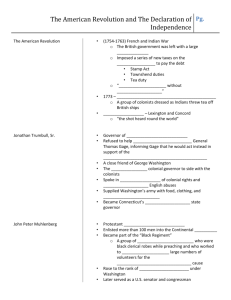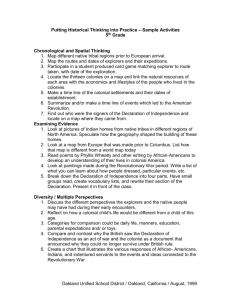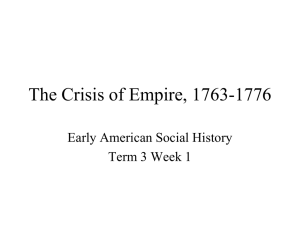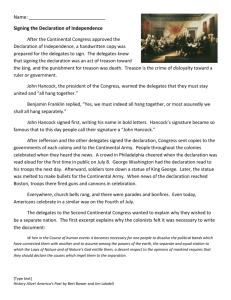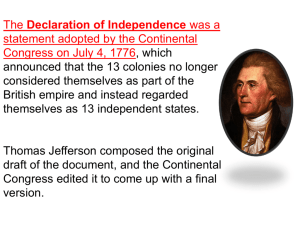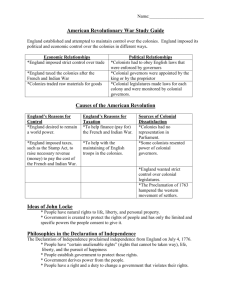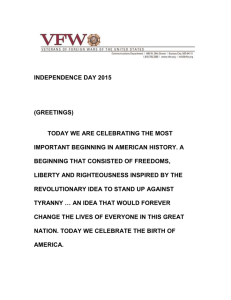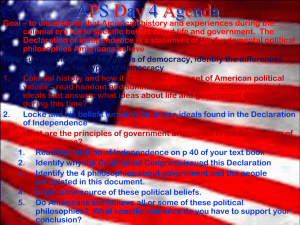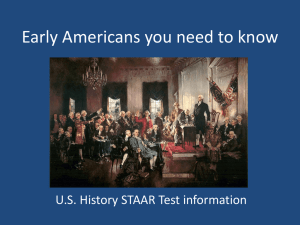People To Know (American Revolution)
advertisement
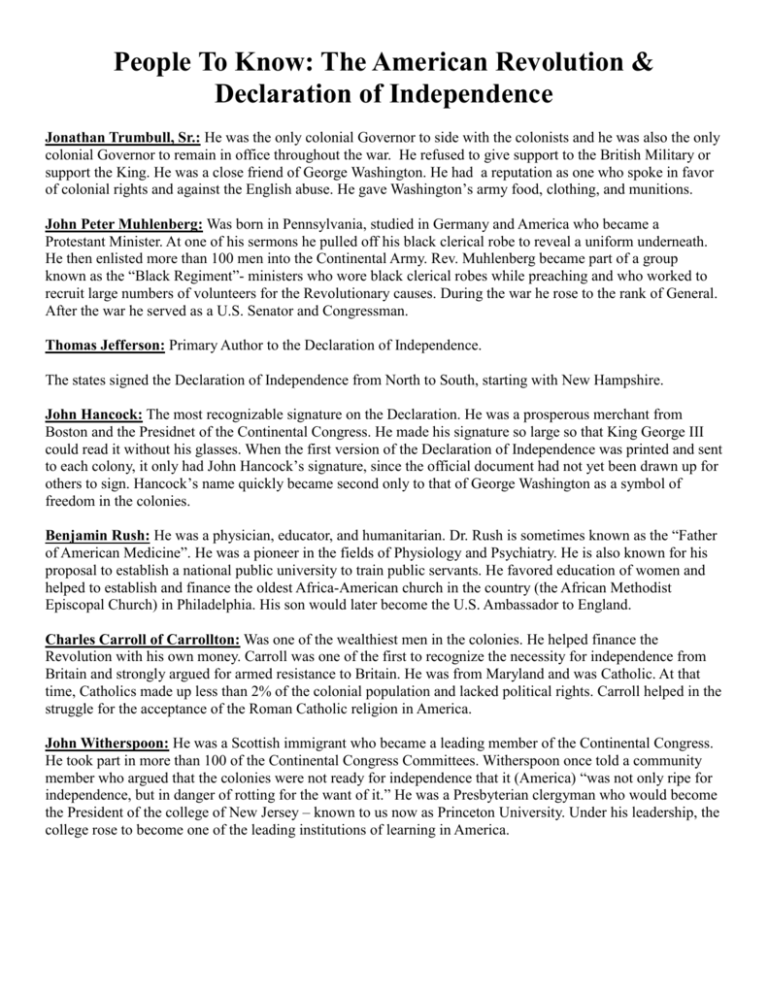
People To Know: The American Revolution & Declaration of Independence Jonathan Trumbull, Sr.: He was the only colonial Governor to side with the colonists and he was also the only colonial Governor to remain in office throughout the war. He refused to give support to the British Military or support the King. He was a close friend of George Washington. He had a reputation as one who spoke in favor of colonial rights and against the English abuse. He gave Washington’s army food, clothing, and munitions. John Peter Muhlenberg: Was born in Pennsylvania, studied in Germany and America who became a Protestant Minister. At one of his sermons he pulled off his black clerical robe to reveal a uniform underneath. He then enlisted more than 100 men into the Continental Army. Rev. Muhlenberg became part of a group known as the “Black Regiment”- ministers who wore black clerical robes while preaching and who worked to recruit large numbers of volunteers for the Revolutionary causes. During the war he rose to the rank of General. After the war he served as a U.S. Senator and Congressman. Thomas Jefferson: Primary Author to the Declaration of Independence. The states signed the Declaration of Independence from North to South, starting with New Hampshire. John Hancock: The most recognizable signature on the Declaration. He was a prosperous merchant from Boston and the Presidnet of the Continental Congress. He made his signature so large so that King George III could read it without his glasses. When the first version of the Declaration of Independence was printed and sent to each colony, it only had John Hancock’s signature, since the official document had not yet been drawn up for others to sign. Hancock’s name quickly became second only to that of George Washington as a symbol of freedom in the colonies. Benjamin Rush: He was a physician, educator, and humanitarian. Dr. Rush is sometimes known as the “Father of American Medicine”. He was a pioneer in the fields of Physiology and Psychiatry. He is also known for his proposal to establish a national public university to train public servants. He favored education of women and helped to establish and finance the oldest Africa-American church in the country (the African Methodist Episcopal Church) in Philadelphia. His son would later become the U.S. Ambassador to England. Charles Carroll of Carrollton: Was one of the wealthiest men in the colonies. He helped finance the Revolution with his own money. Carroll was one of the first to recognize the necessity for independence from Britain and strongly argued for armed resistance to Britain. He was from Maryland and was Catholic. At that time, Catholics made up less than 2% of the colonial population and lacked political rights. Carroll helped in the struggle for the acceptance of the Roman Catholic religion in America. John Witherspoon: He was a Scottish immigrant who became a leading member of the Continental Congress. He took part in more than 100 of the Continental Congress Committees. Witherspoon once told a community member who argued that the colonies were not ready for independence that it (America) “was not only ripe for independence, but in danger of rotting for the want of it.” He was a Presbyterian clergyman who would become the President of the college of New Jersey – known to us now as Princeton University. Under his leadership, the college rose to become one of the leading institutions of learning in America.
